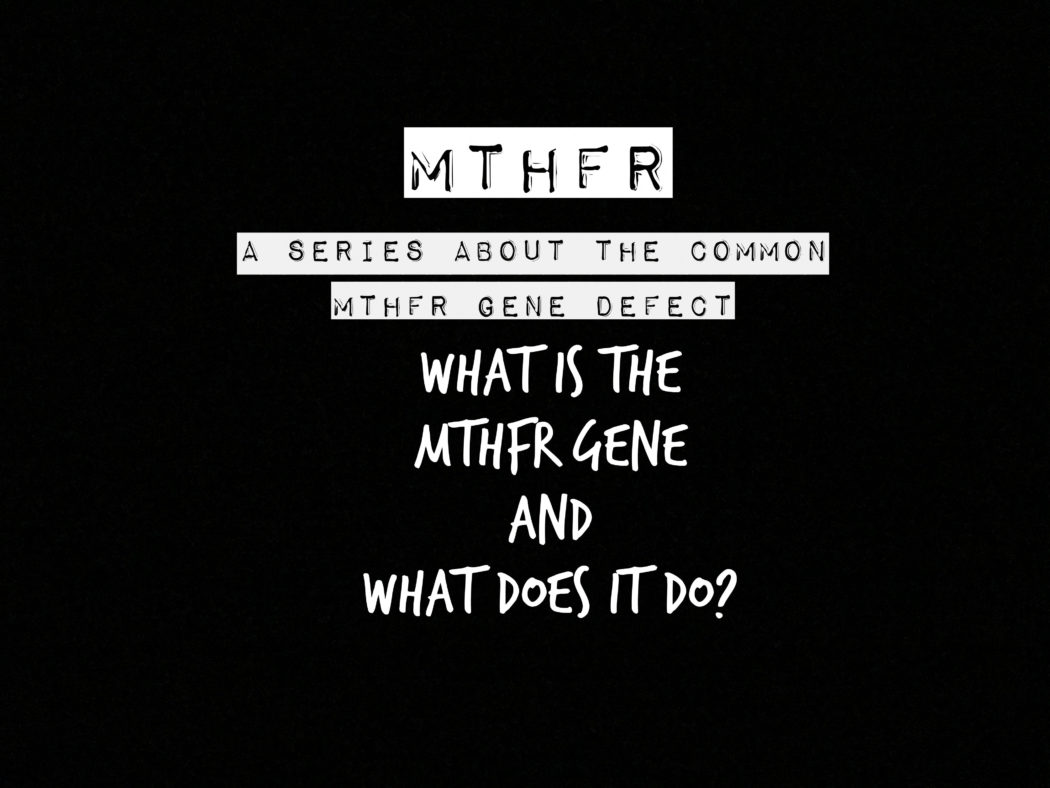As I wrote here, I intend to do do more research on the MTHFR gene defect. I want to find out if and how it has something to do with my current health problems. Thus, I thought it would be best to break down the information I gather during my research in a series of posts. That way, I can present the information on this complex subject in a more easily digestible way by writing about different aspects one at a time.
Today, I am writing about what MTHFR is and the functions it fulfills in our bodies. Most of the information I’m sharing comes from Dr. Ben Lynch’s MTHFR website and his e-book. Dr. Lynch is known for having researched MTHFR extensively and is widely known and respected as an expert in this area.
The information I present here is simply as I came to understand it. I’m not an expert by any means.
MTHFR – A Gene And An Enzyme
MTHFR (or “methylenetetrahydrofolate reductase”) is a gene that produces an enzyme with the same name. Yes, that’s right. It already starts to get confusing. But bear with me.
The MTHFR enzyme is involved in processing amino acids. Amino acids are also called the building blocks for protein. MTHFR helps with an important chemical reaction that uses forms of folate (Vitamin B9). Particularly, the molecule 5,10-methylenetetrahydrofolate is being changed into 5-methyltetrahydrofolate. Put simply, folate is being converted into methylfolate – the active form of folate which the body can use. This process is called methylation. Folate helps convert homocysteine (which can be dangerous if levels are too high) into methionine, an important amino acid involved in building protein and other important compounds.
Methylfolate’s Functions
Methylfolate supports two very important functions in our body:
- Neurotransmitter formation
- SAMe formation
Neurotransmitters are brain chemicals that transfer information throughout our body and brain. They relay signals between nerve cells, called “neurons.” The brain uses neurotransmitters to tell the heart to beat, the lungs to breathe and the stomach to digest. They also allow us to think, sleep, learn and much more.
SAMe (s-adenosylmethionine) is a compound produced by our bodies from methionine. SAMe helps with the maintenance of cell membranes, removal of toxic substances from the body, and the production of mood-enhancing neurotransmitters. SAMe is involved in regulating over 200 enzymes in our body.
Impacts Of An Altered MTHFR Gene
If a gene (a segment of DNA) has an altered DNA base it’s called “polymorphism.” DNA is passed down from parents to children.
If the MTHFR gene has a polymorphism, the enzyme it produces has an altered shape as well. This altered shape reduces the functional ability of the MTHFR enzyme. The methylation process is impaired which means that the conversion of folate into methylfolate (the form of folate the body is able to use) is slowed down.
In turn, the altered function causes decreased neurotransmitter and SAMe function and production.
Possible Symptoms And Conditions
If either function (neurotransmitter or SAMe production) is diminished, many possible symptoms and conditions can occur and worsen over time. Especially certain lifestyle and dietary choices as well as environmental conditions can speed up the risk for diseases.
- Symptoms/Risks of decreased neurotransmitter function:
- Depression
- Anxiety
- Addictive behavior
- ADHD
- Mania
- Irritability
- Sleeping problems
- Learning disorders
- Symptoms/Risks of decreased levels of SAMe:
- Cancer
- Infertility
- Miscarriage
- Autism
- Down’s syndrome
- Thrombosis
- High blood pressure
- Speaking problems
About 1 in 2 people have an MTHFR polymorphism. There are various kinds of MTHFR polymorphisms. The different kinds of polymorphisms are all associated with different risk levels for certain conditions and determine how much certain important processes in the body are impaired. I will write about the most common polymorphisms in a separate post.
In my next post about MTHFR I cover folate and all its various forms. I write about the important difference between folate and folic acid and what people with an MTHFR polymorphism should be paying special attention to when it comes to nutrition and supplementation.
(Sources used for this post: MTHFR.net, MTHFR Basics, Genetics Home Reference, Neurogistics.com, Verywell.com)

